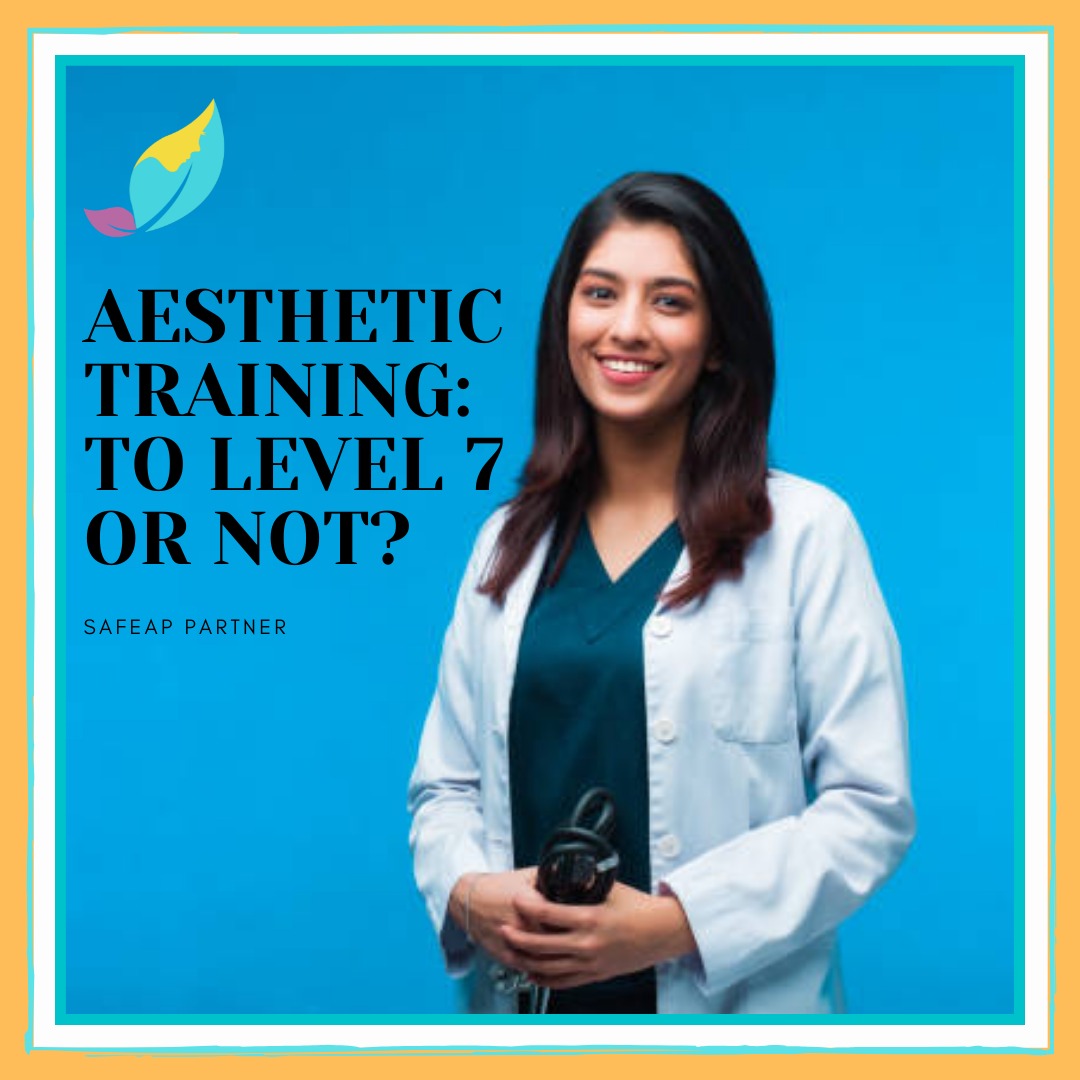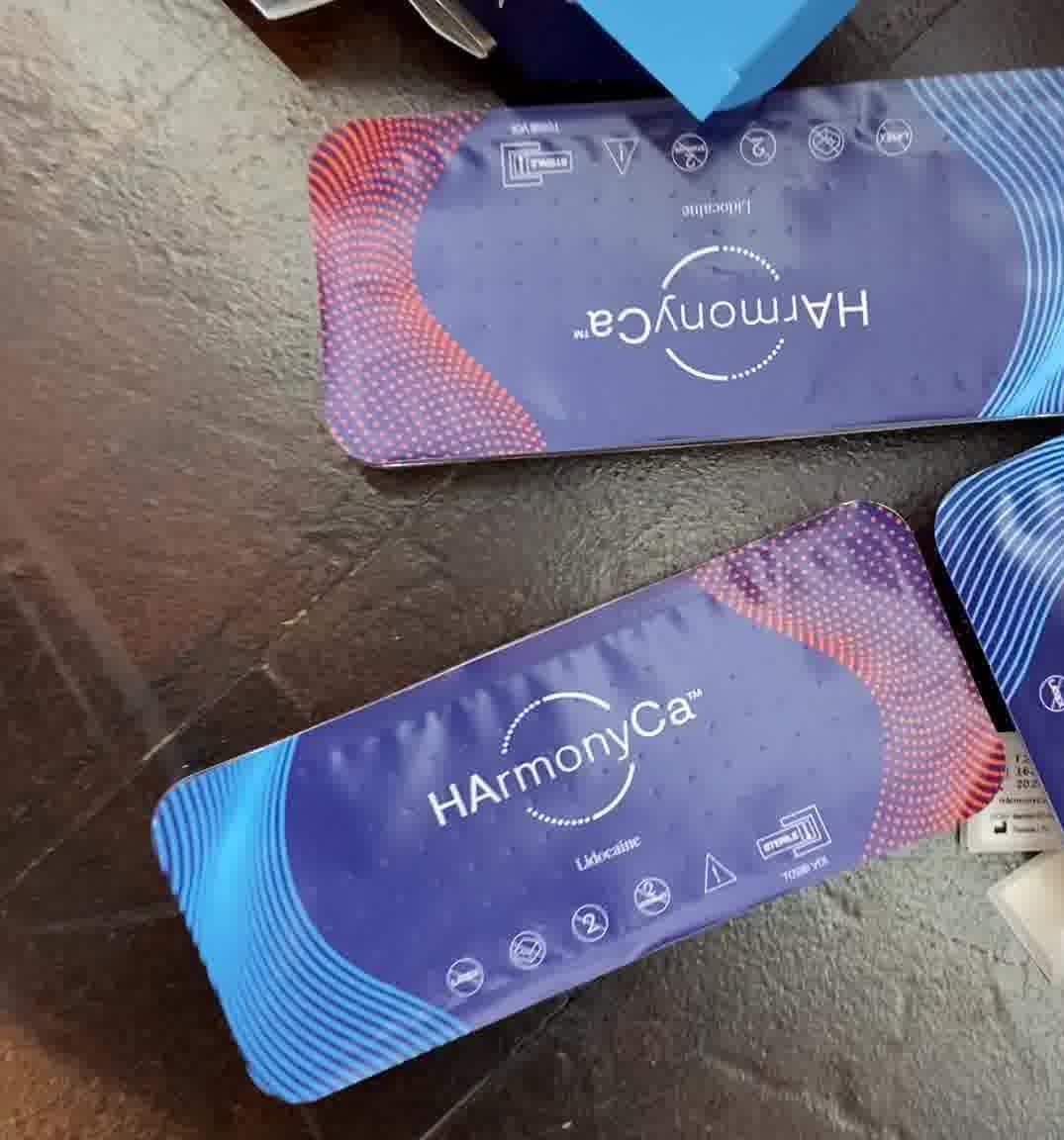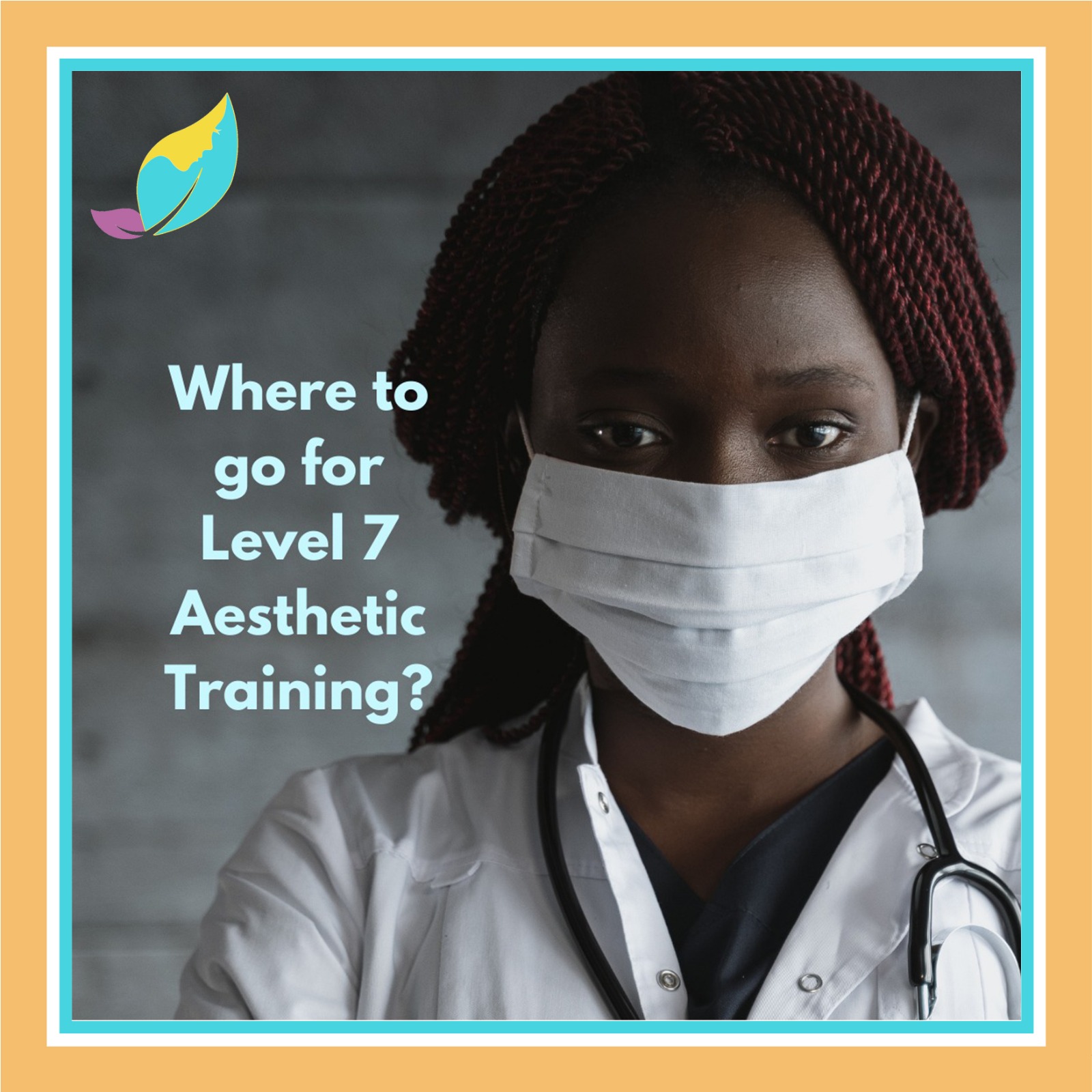Aesthetic Training: To level 7 or not to Level 7? 14/06/2021

So you’ve been hearing the term Level 7 qualification in aesthetics for a while now. Whether you’re completely new to the aesthetic industry or have done some previous training, you’re now considering whether pursuing the Level 7 aesthetic qualification is the right next step in your career. Quite rightly so, choosing your aesthetic training is a huge decision to make and this is why we’re breaking it down for you.
What is the Level 7 Aesthetic Qualification?
It is a postgraduate level studies equivalent to a Postgraduate Certificate (PgCert) or a Postgraduate Diploma (PgDip). Both a PgCert and a PgDip are shorter in duration compared to a Master’s Degree but is worth the apportion of a Master’s Degree.
In Aesthetics, the Level 7 Aesthetic Qualification is a modular course. The pathway to obtaining the Level 7 Qualification varies between aesthetic training centres but are largely divided into 3 - 4 stages starting with foundation course in stage 1 through to the final stage where assessment takes place which earns you the Level 7 Aesthetic Qualification. During these stages, some involve self-study days whereas others involve in-person training days.
What do I need to consider when researching Level 7 aesthetic qualification courses?
There are 2 things that you need to consider even before looking at the prices and duration of these courses. This is because there are providers that offer a similar syllabus to Level 7 but you will not obtain a nationally recognised Level 7 qualification from them.
Are they regulated?
The regulation body for the Level 7 qualification is Ofqual (The Office of Qualifications and Examination Regulation). They are essentially the examination watchdog.
What is the awarding body?
There are currently 2 awarding bodies in the UK for the Level 7 Aesthetic Qualification which are OTHM and VTCT. Prior to 29th April 2020, the other awarding body was Industry Qualifications (IQ) but since they were acquired by SJF Awards, they are no longer recognised by Ofqual.
The VTCT awarding body yields a Level 7 Diploma qualification with a minimum of 60 credits covering topics such as patient assessment, principles and clinical practice of injectables and literature review. Total qualification time of 600 hours. This is approved by the JCCP.
The OTHM awarding body has a slightly different structure.
- The OTHM Level 7 Certificate has a combined total of 34 credits covering topics on patient assessment, principles and clinical practice of injectables. Total qualification time of 350 hours. This is currently not approved by JCCP but candidates can take the remaining credits to achieve the Level 7 Diploma qualification.
- The Level 7 Diploma has a combined total of 60 credits covering extra topics such as Clinical Health, Ethics and Literature review. Total qualification time of 600 hours. This is approved by the JCCP.
- Online Learning
Aesthetic training centres provide materials online that delegates can work through at their own pace. - Foundation Course
This is the first step for any healthcare aesthetic practitioner in their aesthetic career journey. In this course, you’ll learn the basic uses of botulinum toxin and dermal fillers. - Observation Days
Prior to treating any patients, all candidates need to observe 10 botulinum toxin procedures and 10 dermal filler procedures performed by trainers. Observed procedures can be up to 1:10 ratio.
- Supervised Cases
All candidates then need to undergo a minimum of 10 botulinum toxin procedures and 10 dermal filler procedures. For supervised treatments, they need to be provided on a ratio of 1:1. (When deciding on aesthetic training centres, do note that this is a requirement, not a nice-to-have!) - Supervisor Report
This is crucial in keeping tabs of your progress. Once you are ready to undergo your summative assessment, this will be reflected in your supervisor report. - Summative Assessments
- Skills: Direct Observation of Procedural Skills (DOPS)
- This is a supervised practical assessment undertaken as a final case study for the administration of botulinum toxins and dermal fillers.
- Knowledge: Short Answer Questions (SAQs) and written assignments
- The SAQs assesses the knowledge of all the modules included in the Level 7 syllabus.
- Written assignments can vary depending on the qualification. In the Level 7 Diploma, there is a literature review report component where you would write a report on a clinically-relevant aesthetic topic between 1500-2000 words. For the Level 7 Certificate, the literature review component is not included.
- Portfolio Review
All candidates need to keep a portfolio of cases they have observed and treated. They will have to present a total of at least 40 cases of both botulinum toxin and dermal filler treatments.
Is it necessary to complete a Level 7 aesthetic qualification to practise aesthetics?
The simple answer to that is no, it is not compulsory to.
In 2015, Health Education England published a report outlining recommendations for a qualification that would be adopted as the best practice in this industry. The adoption of this new requirement is on a voluntary basis at present. However, it is highly recommended that if you do consider obtaining this qualification, that you invest in a higher degree that is recognised.
How long does the entire qualification take?
While there is no set time frame to complete the Level 7 aesthetic qualification, most practitioners would choose to complete all stages within 6 months of starting. The Level 7 aesthetic qualification does allow a degree of flexibility taking into account the variability between each practitioner’s schedule.
In my next post, I will provide a list of all the centres providing the Level 7 Qualification and how each of them are unique in their own way! If you’re keen for an impartial overview, remember to check that out!
Drop us a comment if you have any questions. We will endeavour to answer them. If we can't, we will find out from reliable sources for you! :)
Have a great Monday everyone,
Sieuming





 by
by